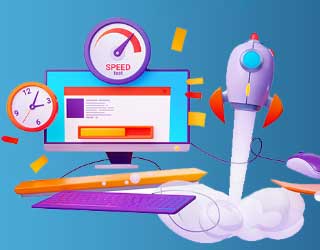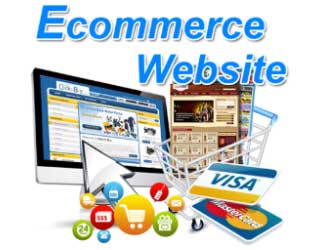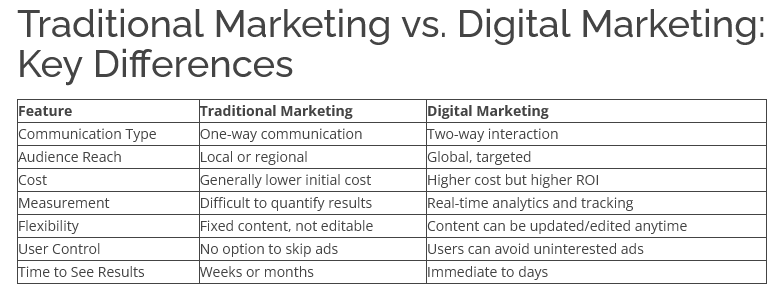Will Digital Marketing be replaced by AI?

Will Digital Marketing be Replaced by AI?
No, digital marketing will not be entirely replaced by Artificial Intelligence (AI). While AI is revolutionizing digital marketing by enhancing automation and analytics, human expertise remains essential.
How AI Enhances Digital Marketing
- Marketing Automation: AI automates repetitive tasks like email campaigns, ad targeting, and bidding strategies.
- Data Analysis & Insights: AI analyzes big data to optimize campaigns and personalize customer experiences.
- Content Personalization: AI recommends personalized content to increase engagement and conversion rates.
Why Human Involvement is Still Crucial
- Strategy and Creativity: Crafting unique marketing strategies and compelling content requires human creativity and intuition.
- Consumer Behavior Understanding: Humans interpret emotions, preferences, and market nuances better than AI.
- Building Trust & Relationships: Personal communication and empathy nurture customer loyalty beyond AI capabilities.
- Adaptability & Innovation: Humans drive innovation and adapt to evolving trends and platforms.
- Ethical Marketing: Marketers ensure AI usage aligns with ethical standards, data privacy, and transparency.
Conclusion
The future of digital marketing in 2025 is a synergy of AI-powered tools and human creativity. Leveraging AI for automation and analytics alongside human-driven strategy and ethics will maximize marketing effectiveness and customer engagement.

Parents and Teens: Building Strong Relationships Through Communication and Trust
The relationship between parents and teenagers is a crucial and complex one that plays a significant role in the development and well-being of both parties. During the teenage years, adolescents go through physical, emotional, and cognitive changes, seeking greater independence and identity formation. This can sometimes lead to conflicts and challenges in the parent-teen relationship.
Key Aspects to Consider
Communication
Open and effective communication is vital in the parent-teen relationship. Both parents and teenagers should strive to listen to each other’s perspectives, express their thoughts and feelings honestly, and find constructive ways to resolve conflicts. Parents should create a safe, non-judgmental environment encouraging teenagers to express themselves and engage in conversations.
Trust and Respect
Building trust and respect is crucial for a healthy parent-teen relationship. Parents should trust their teenagers to make responsible decisions and respect their growing need for autonomy. Teenagers should respect their parents’ guidance and rules, understanding their best interests.
Boundaries and Independence
Balancing boundaries and independence can be challenging. Parents need to set appropriate boundaries ensuring safety while allowing room for teenagers to explore independence and make decisions. Guidance and support are important while gradually giving more responsibility.
Empathy and Understanding
Both parents and teenagers should develop empathy and understanding for each other’s perspectives. Teenagers face unique challenges and emotional ups and downs, so parents should offer support, empathy, and reassurance.
Quality Time and Activities
Spending quality time strengthens the relationship. Shared activities, hobbies, or outings build connection. Parents should balance family time with allowing teenagers space for their own interests and friendships.
Positive Reinforcement and Encouragement
Recognizing teenagers’ achievements and efforts boosts self-esteem and motivation. Parents should focus on strengths and provide constructive feedback when needed.
Flexibility and Adaptability
Parenting styles may need to evolve as teenagers grow. Being flexible, open to new ideas, and adjusting approaches helps maintain a positive relationship.
Every parent-teen relationship is unique. Understanding individual personalities and family dynamics is key. Seeking professional support like family therapists or counselors can be beneficial when challenges arise.

Why Page Speed is So Important for Your Website and How You Can Improve It
Page speed is crucial for several reasons, impacting user experience, search engine rankings, mobile optimization, and conversion rates. Here are some of the main reasons why improving page speed is essential:
User Experience
Fast-loading pages provide a positive user experience. Users expect websites to load quickly, and delays can lead to higher bounce rates. A fast site engages visitors, improves interaction, and promotes satisfaction.
Search Engine Rankings
Search engines, particularly Google, prioritize fast-loading websites in their rankings. Faster websites are more likely to appear higher in search results, increasing organic traffic and visibility.
Mobile Optimization
With mobile-first indexing, having a fast mobile version of your site is essential. Mobile users often face slower internet connections, and a faster mobile site improves the user experience and mobile search rankings.
Conversion Rates
Page speed directly impacts conversion rates. Delays can result in higher bounce rates, reducing opportunities for sales, sign-ups, and form submissions. Fast-loading websites provide smoother, more effective conversion experiences.
Mobile-First Indexing
Google uses mobile-first indexing, so your mobile site’s page speed directly influences its SEO ranking. Ensuring a fast mobile experience is critical for retaining visitors and maintaining visibility on search engines.
Competitive Advantage
In a fast-paced digital landscape, users expect quick load times. A slow website can drive potential customers to competitors, so optimizing page speed gives you a crucial competitive edge.
How to Improve Your Website’s Page Speed
- Optimize images and media files for faster load times.
- Minimize and combine CSS, JavaScript, and HTML files.
- Leverage browser caching and use a Content Delivery Network (CDN).
- Choose a fast, reliable web hosting provider with scalability options.
- Use lazy loading for images and videos.
- Enable server-side compression and use GZIP.
Optimizing page speed is an investment that improves user experience, increases search engine rankings, and enhances conversion rates. Regularly monitor and optimize your website’s performance to stay competitive in the digital marketplace.
For more tips on website performance and SEO, follow our blog or contact us for professional advice.

E-commerce Website Guide for 2025: Build Your Online Store & Sell Products
What is an E-commerce Website?
E-commerce websites enable businesses to sell products or services online, offering customers a seamless shopping experience with secure payment gateways and fast shipping options.
Steps to Build a Successful E-commerce Website
- Plan Your Strategy: Define target audience, product range, pricing, and business goals for your online store.
- Choose an E-commerce Platform: Shopify, WooCommerce, Magento, BigCommerce, Squarespace are top choices for 2025.
- Register Domain & Set Hosting: Secure a brandable domain and reliable e-commerce hosting with SSL for security.
- Design & User Experience: Create responsive, mobile-friendly layouts optimized for fast loading and easy navigation.
- Add Products: Upload high-quality images, detailed descriptions, and optimize for SEO.
- Integrate Payment Gateways: Support popular options like credit cards, PayPal, Apple Pay, Google Pay.
- Setup Shipping & Fulfillment: Include shipping calculators, tracking, and multiple carrier options.
- Implement SEO & Analytics: Optimize meta tags, keywords, and use Google Analytics to track performance.
- Market Your Store: Use social media marketing, email campaigns, influencer partnerships, and PPC ads to boost sales.
- Customer Support: Provide live chat, FAQs, and timely assistance for customer satisfaction.
Types of E-commerce Websites
- B2C (Business-to-Consumer): Selling directly to consumers (e.g., Amazon, clothing stores).
- B2B (Business-to-Business): Transactions between businesses, often involving bulk orders.
- C2C (Consumer-to-Consumer): Platforms for individuals selling to each other, like eBay.
- P2P (Peer-to-Peer): Sharing economy services such as Uber and Airbnb.
- Dropshipping: Selling products without holding inventory, fulfilled by suppliers.
- Subscription-based: Recurring product/service delivery like subscription boxes or SaaS.
- Digital Products: Downloadable goods such as e-books, courses, and software.
- Non-profit E-commerce: Platforms for donations, fundraising, and merchandise sales for NGOs.
Why Choose Host4Asia for Your E-commerce Website?
Host4Asia offers expert guidance on platform selection, reliable hosting, SSL security, and tailored digital marketing strategies to grow your online business in 2025.

Network Security Solutions for Businesses | Host4Asia
Protect your digital assets with advanced cybersecurity services and network protection strategies.
The Growing Threat Landscape in Cybersecurity
Cyberattacks like ransomware, phishing, data breaches, and DDoS attacks are becoming more frequent and complex, threatening businesses with financial losses, reputational harm, and downtime. To protect sensitive data and ensure continuous operations, it’s crucial to implement strong security measures. Timely monitoring and rapid response play a key role in reducing the impact of these cyber threats. By investing in tailored network security solutions, organizations can stay resilient and ahead of emerging risks in today’s dynamic threat environment.
Host4Asia’s Approach to Robust Network Security
Host4Asia offers tailored network security solutions designed to protect your business infrastructure and data. Our services include:
- Firewall Implementation: Powerful firewalls as your first defense against cyber intrusions.
- Data Encryption: Protecting sensitive information in transit and at rest with advanced encryption standards.
- Access Control: Secure password policies, two-factor authentication, and strict user permissions.
- 24/7 Monitoring & Support: Real-time threat detection and response services to prevent attacks.
- Customized Security Strategies: Tailored security solutions aligned with your business needs and compliance requirements.
Building a Safer Digital Future with Host4Asia
Security should empower your growth, not hinder it. Our scalable solutions evolve alongside your business, ensuring resilience in the face of emerging threats and an ever-changing digital landscape.
If you’re ready to fortify your network and protect your assets, contact Host4Asia today.

Comparison Between Traditional Marketing and Digital Marketing
Let’s understand the terminology of traditional marketing and digital marketing to help you decide which marketing strategy suits your business.
What is Traditional Marketing?
Traditional marketing refers to the well-established methods of purchasing and selling goods and services using offline channels. Historically, human society progressed from barter systems to trading and marketing. Traditional marketing involves techniques such as:
- Billboards and signboards
- Flyers and newspapers
- Television and radio commercials
- Posters and broadcasts
- Door-to-door sales and sponsorships
While traditional marketing is generally less expensive upfront, it is often less effective at building brand awareness and hard to measure in terms of ROI. It targets local audiences with one-way communication and shows results over weeks or months. Moreover, users have no control over the ads they see.
What is Digital Marketing?
Digital marketing moves faster than traditional methods and involves promoting products or services via electronic channels. The term “digital” comes from the binary system (0s and 1s) used by computers. Digital marketing channels include:
- Email marketing campaigns
- Search engine optimization (SEO)
- Social media marketing on platforms like Facebook, Instagram, Twitter, and LinkedIn
- Pay-per-click (PPC) advertising
Known as the “father of digital marketing,” Philip Kotler laid the foundation of modern marketing strategies. Digital marketing is costlier but highly efficient for brand promotion and global reach. It provides tools to:
- Analyze customer engagement and product performance
- Customize ads and marketing messages for targeted users
- Edit and update advertisements in real time
- Allow users to skip unwanted ads
Digital marketing uses two-way communication and offers quick, measurable results that improve customer satisfaction and drive business growth worldwide.
Traditional Marketing vs. Digital Marketing: Key Differences
| Feature | Traditional Marketing | Digital Marketing |
|---|---|---|
| Communication Type | One-way communication | Two-way interaction |
| Audience Reach | Local or regional | Global, targeted |
| Cost | Generally lower initial cost | Higher cost but higher ROI |
| Measurement | Difficult to quantify results | Real-time analytics and tracking |
| Flexibility | Fixed content, not editable | Content can be updated/edited anytime |
| User Control | No option to skip ads | Users can avoid uninterested ads |
| Time to See Results | Weeks or months | Immediate to days |
Conclusion
Both traditional marketing and digital marketing have their benefits depending on your business goals. Traditional marketing remains effective for businesses focusing on local markets and those comfortable with established methods. In contrast, digital marketing drives global growth and provides measurable, adaptable strategies ideal for modern businesses aiming for wider reach and customer engagement.
For startups and growing enterprises, incorporating digital marketing strategies such as SEO, social media, and online advertising is essential to stay competitive and maximize ROI.